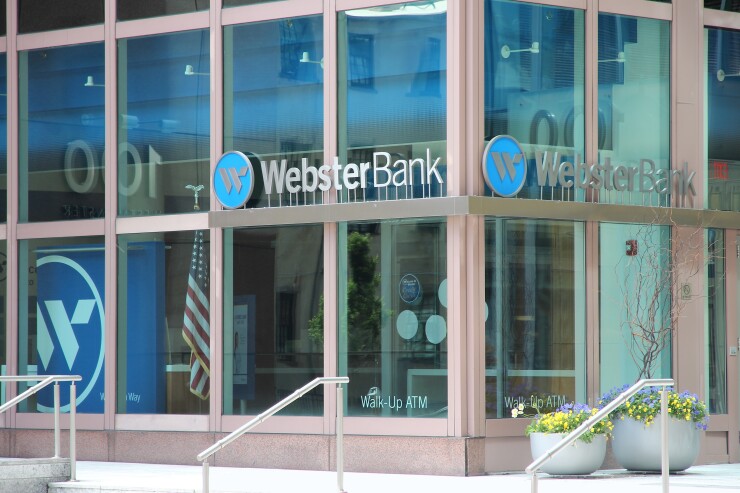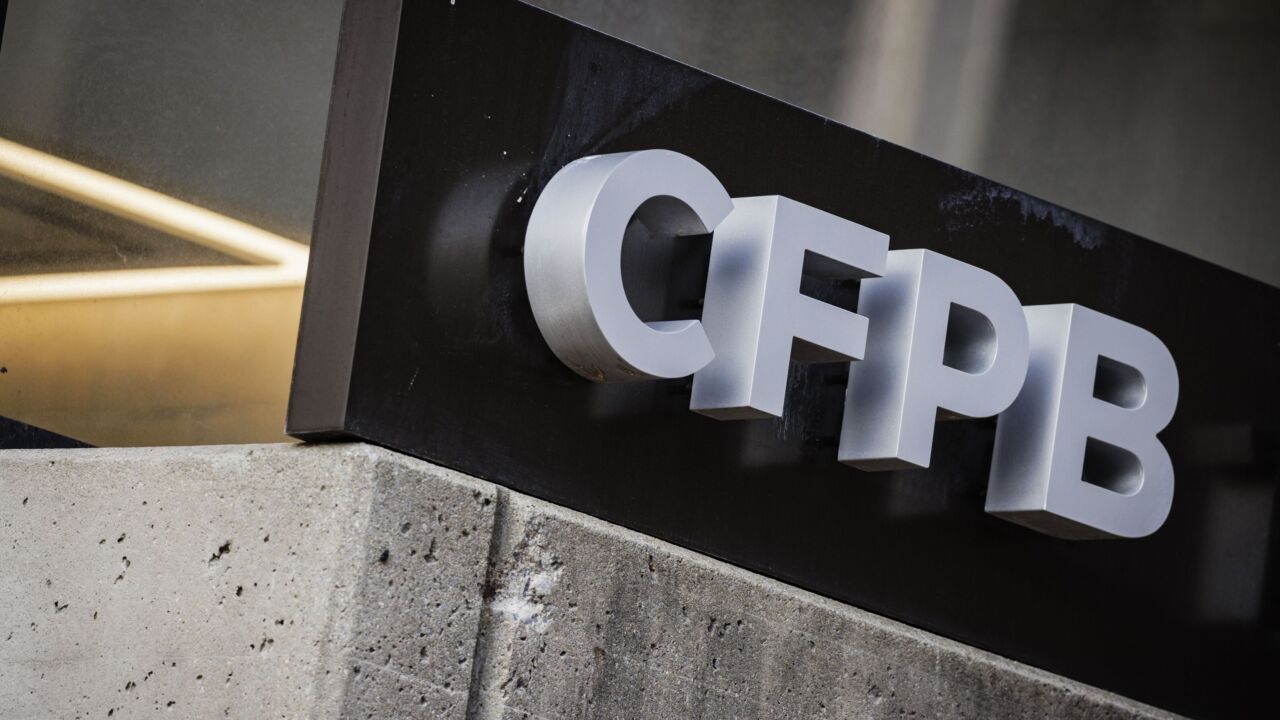Webster Financial executives said Friday that they expect loan growth to pick up this year, as businesses lean more toward optimism than caution.
The Stamford, Connecticut-based bank grew its loan book to $52.5 billion at the end of last year, up 3.5% from a year earlier and outpacing the banking industry's muted growth. And executives told investors to expect loan growth of 4%-5% in 2025.
At least some of the optimism is due to post-election "Trump bump exuberance," said John Ciulla, Webster's chairman and CEO.
"But I think when you look through it, you talk to customers, you look at pipelines, there's a decidedly positive bias and optimism going forward," Ciulla said.
Still, he noted that the optimism is "cautious," as uncertainty over President-elect Donald Trump's tariff policies and the still-elevated level of interest rates is still holding back clients from "investing aggressively," Ciulla said.
"People feel like it will take time to see how all of these dynamics play out," Ciulla said.
The bank's stronger loan guidance and a bolstered profit forecast for 2025 helped push up the bank's stock price by about 4% on Friday. Executives expect Webster's net interest income to surpass $2.45 billion, up from roughly $2.3 billion in each of the last two years.
"We would characterize it as a very strong quarter for the company and expect the stock to nicely outperform today," Piper Sandler analyst Mark Fitzgibbon wrote in a note to clients.
The bank's earnings did slide a bit to $177.8 million during the fourth quarter, down from $185.4 million a year earlier. The decline was partly due to one-time hits from a deferred tax asset valuation change and a restructuring of the bank's bond portfolio.
Excluding its bond portfolio and a tax adjustment, diluted earnings per share were $1.43. That was down from $1.46 a year earlier, but beat the consensus analyst estimate of $1.35, according to S&P Capital IQ.
Commercial and industrial loans, along with residential mortgage loans, made up much of Webster's loan growth last year.
The company has been cutting back its exposure to commercial real estate, a sector that has worried investors and regulators alike. A decline in office loans and an increase in CRE borrowers paying off their loans brought Webster's CRE loan portfolio to 255% of capital in the fourth quarter, down from 285% in the middle of last year. Regulators tend to apply closer scrutiny to banks with CRE concentrations above 300%.
After getting to its desired CRE level two quarters ahead of time, Webster is ready to return to modest growth in that portfolio, though without bumping up its CRE concentration, executives said.
"We are in the commercial real estate business, and we have capacity to replace what's rolling off — and even, quarter to quarter, potentially have some growth," Ciulla said.
The CRE sector helped drive up Webster's net loan charge-offs to $61 million, compared with $34 million a year earlier. Net charge-offs made up 0.47% of total loans in the fourth quarter, up from 0.27% a year earlier.
Loans tied to office buildings and health care services — two areas Webster executives have flagged as exhibiting greater stress — drove much of the increase. Commercial and industrial loans fared better, and Webster executives didn't see enough stress to meaningfully bump up the volume of loans on the bank's watch lists.
Ciulla said he sees "underlying credit migration trends moderating," with an improvement in credit metrics expected later this year. But he also said Webster can handle a more negative scenario.
"The good news for us is we're very profitable," Ciulla said. "Even in a high charge-off quarter in the fourth quarter, we had really terrific return profile and good profitability."
Ciulla also seemed optimistic that the Trump administration may ease regulations for regional banks. The $79 billion-asset bank has been investing heavily on technology and regulatory reporting tools to prepare to meet the demands that regulators place on institutions with more than $100 billion of assets.
While those efforts aren't cheap, many of the investments will enable the bank to "operate more nimbly, discover new pockets of opportunity" and engage in "earlier mitigation of risk management concerns," Ciulla said.
Other regulatory-related investments are more "check-the-box or perfunctory," without making the bank much stronger or better, Ciulla said. If Trump-era regulators ease some requirements on banks with over $100 billion of assets, Ciulla is preparing to cut back on some of the less-needed regulatory investments, though the bank said it was too early to lay out specific savings figures.
In either scenario, Webster is preparing to transition to the larger-bank regulatory framework, Cuilla said.
When asked about the bank's appetite for mergers, Ciulla said Webster is "really excited about our path forward from an organic perspective."
But the bank is also keeping open its options for an acquisition in case the Trump administration eases regulatory burdens. Right now, there's a "bright line hurdle at $100 billion," which dampens Webster's appetite for a merger that would make it bigger and put it in the category of banks with between $100 billion and $250 billion of assets. Those so-called Category IV banks are subject to heightened regulatory standards.
It will "take some time to really get a good sense of what the regulatory paradigm will look like," Ciulla said.
"But to the extent M&A is easier, more allowable, or the restrictions or the additional work that we need to do for Category IV has lessened over time, that … could accelerate our looking at inorganic growth," Ciulla said, though he added it's currently not in Webster's 2025 plans.







